|
Social
News 20/8
Bình Thuận
searches for ship involved in accident
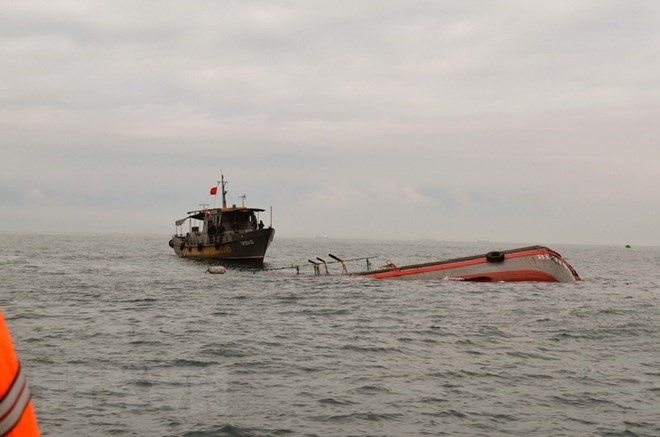
The fishing boat sank after the
collision at sea.
The Bình Thuận Province People’s Committee on Thursday
sent an urgent letter to concerned organisations to ask for help for a
fishing vessel that was hit by a container ship.
The fishing boat, from La Gi Town in Bình Thuận
Province, was hit by the Hải Dương 19 transport ship before the larger vessel
fled the scene of the collision.
The committee asked the provinces’ border guards to
search for the Hải Dương 19 and collaborate with other organisations to
investigate the case.
The committee asked the Maritime Administration of Bình
Thuận and the Phan Thiết Radio Station to inform all ships to help the
fishing boat.
The committee also asked the La Gi Town People’s
Committee to support the captain and crewmembers of the boat so they will be
able to repair the vessel.
A report by the Bình Thuận People’s Committee said that
the fishing boat named BTh 96835 TS, with a capacity of 227CV, has four seamen
on board. The boat was owned by Bạch Tấn Thà, 41. It was hit on August 13 by
the Hải Dương 19 ship while catching cuttlefish about 23 nautical miles off Ô
Cấp Cape in the southern province of Bà Rịa-Vũng Tàu. The fishing ship
sustained severe damage and sank.
The four seamen were saved by a passing vessel.
Hà Nội dykes in peril amid flood
season
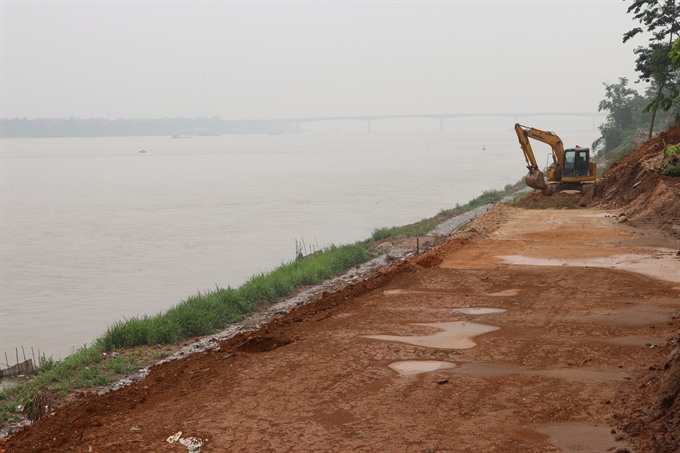
A damaged section of Hồng (Red)
River’s dyke running through Thường Tín District in Hà Nội is repaired by a
competent agency.
Amid the peak of the rainy season, dyke violations in
Hà Nội are set to rear their ugly head.
Violations have existed for many years but have not
been resolved by competent agencies, harming dyke safety, the flood
irrigation corridor for the capital.
According to Nhân Dân (The People) newspaper, most of
the dyke violations involved the construction of houses and workshops,
illegal sand exploitation, storage of building materials and overloaded
vehicles travelling on dykes.
Other violations included dumping construction rubbish,
removing gravel and digging irrigation channels.
The violations occurred frequently on the Hồng (Red)
River section running through Thường Tín District.
About seven building material storage points licensed
by local agencies were found in Thống Nhất Commune with dozens of high sand
piles along the river’s dyke, the report said.
Along the river’s dyke in Liên Mạc Ward of Bắc Từ Liêm
District, seven companies occupy unused land to store and transport
construction materials, with sand piled up behind trees.
These points are located near the river, about 100m
from the dyke, causing damage and subsidence to the dyke, with overloaded
trucks operating all day and night.
Nguyễn Hữu Đắc, a resident in Thường Tín District’s
Hồng Vân Commune, said these vehicles had not only threatened the safety of
the dyke but also polluted the environment and affected the lives of
thousands of households.
Households in Ninh Sở Commune have also blamed owners
of building material storage sites for encroachment on agricultural land and
dyke protection corridors to build workshops, damaging the dyke in the rainy
season.
Many violations have been tackled by local authorities
but offenders still ignore the regulations and sanctions and have continued
violating for years.
Widespread violations are reducing the dykes’
effectiveness in the storm season, yet little has been done to resolve the
issue.
Đỗ Đức Thịnh, head of Dyke Management and Flood
Prevention Division, said the capital city’s dyke system was in good shape to
control floods. However, with the unusual occurrence of natural disasters, it
was difficult to anticipate incidents.
Serious violations were being reported, such as the
presence of houses and other constructions on the dykes, but they had not
resulted in a clearance of the dykes, he said.
Statistics showed there were 15 violations in 2015 and
47 in 2016.
In 2017, heavy rain washed away a section of the dyke
on Bùi River in Chương Mỹ District, causing serious damage to local property.
More than 1,000 households of the two communes were
isolated by floods and hundreds of hectares of crops, aquatic products and
cattle were destroyed.
According to the city’s Department of Agriculture and
Rural Development, some landslides occurred on embankments in Ba Vì and Phúc
Thọ districts since the beginning of this year, threatening the dyke system,
lives and property.
Chu Phú Mỹ, the department’s director, said thousands
of dyke violations had occurred.
In April alone, 22 violations were reported in Hà Nội.
Mỹ said many people claimed they did not know their
actions had violated the dyke protection corridor.
It seemed that people were not informed about dyke
laws, he said.
Vice chairman of Ninh Sở Commune People’s Committee, Đỗ
Cao Mạnh, said in addition to the limited knowledge of the people, another
issue was that the Dyke Law and legal documents had revealed inadequacies
after more than 10 years of implementation.
There were still unspecific regulations on violations,
causing difficulties to agencies, he said.
Lê Xuân Tiến, inspector of Hà Nội Department of
Transport, said a lack of strict punishment on the violations made the
situation complicated.
The department would continue to work with local
authorities to review and add more traffic signs and vehicle weight restriction
signs along the dyke, he said.
The inspection should also be strengthened in terms of
compliance with the regulations of the transport companies, especially those
with multiple offences to improve the situation, said Tiến.
Long An reduces number of smuggling,
trade fraud cases
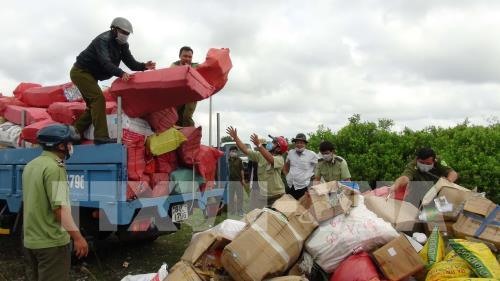
The Mekong Delta province of Long An
has made significant achievements in fighting smuggling and trade fraud at
border areas.
The Mekong Delta province of Long An has made
significant achievements in preventing and fighting smuggling and trade fraud
at border areas.
Nguyễn Văn Việt, head of Long An Province’s Market
Management Sub-Department, said that 672 smuggling and trade fraud cases were
discovered in the first six months of the year, a drop of 424 over the same
period last year.
About 1 million packages of smuggled foreign-made
cigarettes were found, 300,000 less than the same period last year.
The province collected fines of VNĐ5.5 billion
(US$238,740) for the state budget and prosecuted many cases involving trade
and transport of prohibited goods.
The investigation police have decided to start criminal
proceedings against many violators.
The number of smuggling cases has fallen, thanks to an
increase in fines and court cases.
However, the situation could worsen near the end of the
year before the Christmas and Tết (Lunar New Year) seasons.
Trần Văn Cần, chairman of the province’s People’s
Committee, has directed the province’s anti-smuggling forces to step up
patrols and control smuggling and trade fraud.
Officials, civil servants and soldiers who engage in
smuggling and trade fraud must be punished, he said.
The province would raise public awareness about laws on
smuggling and trade fraud via the media, and try to create more jobs for
people who turn to smuggling to earn an income, he said.
The Mỹ Quý Tây Border Gate Economic Area in Đức Huệ
District near the border with Cambodia has long been seen as a transit point
for cigarette smuggling to HCM City.
Reduced sentences for nine
defendants in Hà Nội’s land violations
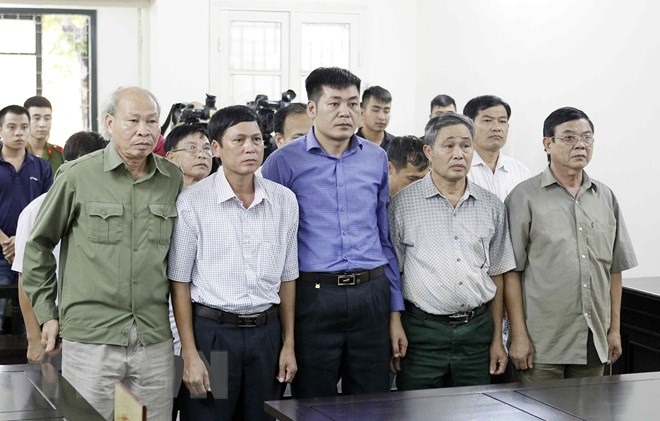
A court of appeal yesterday decided
to reduce the sentences of nine defendants involved in land violations in
Đồng Tâm Commune in Hà Nội’s Mỹ Đức District last year.
A court of appeal yesterday decided to reduce the
sentences of nine defendants involved in land violations in Đồng Tâm Commune
in Hà Nội’s Mỹ Đức District last year.
The Hà Nội People’s Court ruled in favour of the nine
defendants who had appealed for reduced penalties. However, the court rejected
the appeal of Phạm Hữu Sách, former head of the district’s Division of
Natural Resources and Environment, who will still have to serve 24 months of
probation.
The violations made by the officials were uncovered
following complaints by residents about a land scandal which made headlines
in late March and mid-April, 2017.
Ten former local officials faced charges of abusing
their positions and power pursuant to Article 281 of the Penal Code.
Those charged with “abuse of power while on duty” were
entitled to reduced sentences, including Lê Đình Thuần, former chairman of
Đồng Tâm Commune’s People’s Committee, whose sentence was cut from 42 months
to 36 months in prison; and Nguyễn Tiến Triển, former secretary of Đồng Tâm
Commune’s Party Committee, whose sentence was cut from 30 months to 26 months
in prison.
Nguyễn Văn Đức, former chairman of Đồng Tâm Commune’s
People’s Committee; Bùi Văn Hồng, formerly in charge of military affairs for
Đồng Tâm Commune’s People’s Committee; and Bùi Văn Dũng, former head of Đồng
Tâm Commune’s Financial Division, had their sentences cut from 30 months to
24 months.
Nguyễn Văn Minh, former head of Đồng Tâm Commune’s
Police; and Nguyễn Văn Khang, former head of Đồng Tâm Commune’s budget, will
serve suspended sentences of 20 months instead of 24 months.
Regarding the charges of “irresponsibility causing
serious consequence”, the initial sentence of 36 months behind bars for Đinh
Văn Dũng, former director of Mỹ Đức District’s Land Registration Office, was
changed to 36 months of probation, while Bạch Văn Đông, former deputy
director of Mỹ Đức District’s Land Registration Office, also had his sentence
commuted from 30 months in jail to a 30-month suspended sentence.
The appeal panel stated that at their first trial all
the defendants had confessed to their offences apart from Sách, who said he
had signed a document regarding land use but it was not unlawful, Vietnam
News Agency reported.
The panel judged that Sách’s appeal was groundless and
upheld his initial 24-month suspended sentence. While on duty, Sách had
failed to properly check dossiers regarding land use before signing them,
resulting in the unlawful granting of land use right certificates to 12
households in the locality with total land covering 1,837sq.m. — VNS
Ha Nam: Medical workers get training
on effective dengue prevention
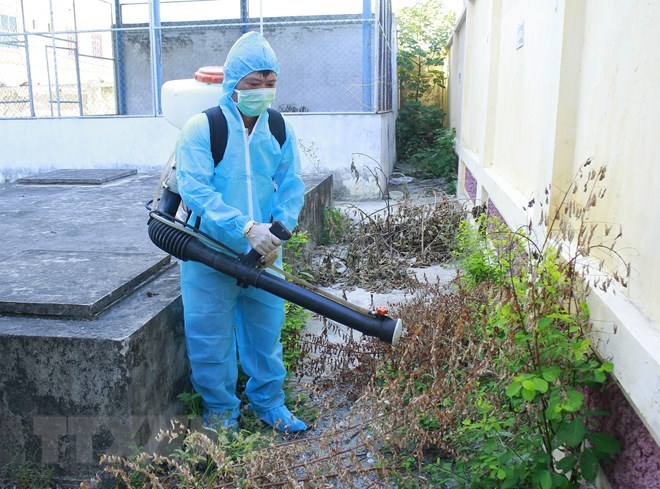
A training workshop was organised for medical workers
in the northern province of Ha Nam, about 50km south of Hanoi, on August 17
to improve their skills and capacity to deliver effective dengue prevention
at all levels.
The event was co-held by the National Institute of
Hygiene and Epidemiology (NIHE) and the provincial Centre for Disease
Control.
Experts from the NIHE provided the attendees with basic
knowledge on dengue fever epidemiology, dengue vectors and methods to treat
dengue hotspots and others.
The health workers were also introduced to different
types of mosquito foggers and anti-mosquito chemicals and how to mix chemical
substances to kill and repel mosquitos as well as proper ways to clean up the
environment around houses and at work.
According to Deputy Director of the Ha Nam Centre for
Disease Control Nguyen Ngoc Anh, more than 800 people across the province
were infected with dengue fever last year with some 600 having travelled back
from Hanoi and other provinces.
Thanks to the province’s preventive efforts, no death
was reported due to dengue, he said, adding that this year, Ha Nam has recorded
two dengue fever cases so far.
The training has helped local health workers become
more active in preventing dengue fever this year which is forecast to be more
complicated, Anh said.
Dengue fever is an acute viral disease spread by two
kinds of mosquitoes – Aedes Aegypti and Aedes Albopictus., with no specific
vaccine and treatment established to date.
The disease is common in tropical countries. In
Vietnam, peak season of the disease lasts from July to October. As the virus
is divided into four types – D1, D2, D3 and D4, a person can be infected many
times.
Vietnam experienced a boom of dengue fever in 2017 when
181,054 infection cases and 30 deaths were reported in almost all localities,
mostly Hanoi and Ho Chi Minh City.
Last month, Ho Chi Minh City reported the first death
caused by the disease in 2018.
More coaches and trains rolled out
for National Holiday
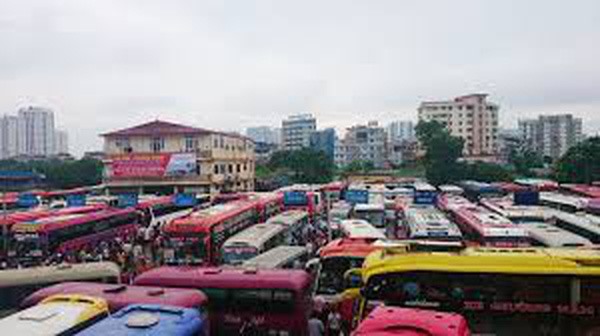
More coaches will be operated to
serve the high demand for travel during the upcoming National Day holiday. —
Photo dantri.com.vn
Three hundred more coaches and buses would be put into
service for the upcoming National Day holiday on September 2, according to a representative
of the Hà Nội Bus Station Company.
Nguyễn Anh Toàn, director of the Hà Nội Bus Station
Company, told dantri.com.vn that the company had forecast passenger numbers
would rise dramatically between August 31 and September 1, so it had asked Hà
Nội’s Department o Transport for permission to lay on 300 extra coaches and
buses.
The coaches would focus on passengers going to Hải
Phòng City and the provinces of Nam Định, Hải Phòng, Thái Bình, Phú Thọ, Lai
Châu and Quảng Ninh, said Toàn.
The company has also asked stations to set up more
ticket booths to reduce overloading before the vacation.
Meanwhile, the Hà Nội Railway Company plans to run 140
extra trains with 90,000 seats during the holiday.
From August 31 to September 3, the Sài Gòn Railway
Company will operate more 30 trains with 14,000 seats from HCM City to Phan
Thiết, Nha Trang, Quy Nhơn and Quảng Ngãi, and from Nha Trang to Huế.
Ticket prices in these services will be subject to a
10-20 per cent discount.
Ngoc Linh ginseng to be planted in
Khanh Hoa
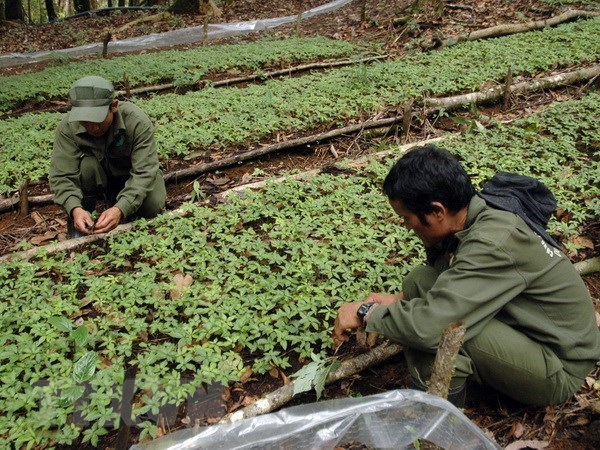
A garden of Ngoc Linh ginseng
seedlings of the Dak To Forestry Co. Ltd
About 2,000 trees of Ngoc Linh ginseng will be planted
at the Hon Ba Nature Reserve in the central coastal province of Khanh Hoa
under a scientific research project.
With a total funding of over 1 billion VND (43,000 USD), the project, to last until 2020, aims to expand Ngoc Linh ginseng production models in order to meet the increasing demands for ginseng and attract more tourists to the reserve. Covering more than 20,000 hectares in Khanh Vinh, Khanh Son, Cam Lam and Dien Khanh districts, the Hon Ba Nature Reserve has a diverse flora system with over 590 species. The Ngoc Linh ginseng (Panax vietnamensis, or Vietnamese ginseng) was found on Ngoc Linh Mountain on the border between the Central Highlands province of Kon Tum and the central province of Quang Nam in the late 1960s. By 1979, Quang Nam province had established the Tra Linh drug materials farm on the mountain, but it suffered from low productivity. Kon Tum province had also built up a conservation centre for the Ngoc Linh ginseng in 2004. Currently, raw ginseng is sold for 40 million VND (1,900 USD) per kilo, but the two provinces can only produce pharmaceutical materials and energy drinks due to poor investment in processing technology. The Vietnamese ginseng was one of eight precious and endangered flora genes covered in Quang Nam province’s conservation programme for 2014-2020, including Ba Kich (poor ginseng or codonopsis), pepper, cinnamon, large rattan and white corn.-VNA
Da Nang steps up measures against
dengue fever
Residents in the central city of Da Nang should
intensify measures against dengue fever as the rainy season has started,
encouraging mosquito populations to grow, said a local doctor.
Doctor Nguyen Tam Lam from the municipal Preventive
Health Centre said 1,447 cases of dengue had been recorded in the city so far
this year, down more than 65 percent over the same period last year.
However, from August 6-12, Da Nang reported 88 cases,
12 cases more than the previous week, mostly in Lien Chieu, Thanh Khe and Hai
Chau districts, according to the doctor.
The Preventive Health Centre has coordinated with
medical teams in the districts to handle dengue hotspots, Lam said, adding
that apart from spraying mosquito repellent, the local medical sector has
intensified the information work to raise public awareness of the fight
against the epidemic.
Dengue fever is an acute viral disease spread by two
kinds of mosquitoes – Aedes Aegypti and Aedes Albopictus, with no specific
vaccine and treatment established to date.
The disease is common in tropical countries. In
Vietnam, peak season of the disease lasts from July to October. As the virus
is divided into four types – D1, D2, D3 and D4, a person can be infected many
times.
Vietnam experienced a boom of dengue fever in 2017 when
181,054 infection cases and 30 deaths were reported in almost all localities.
HCM City adjusts height of building
projects in district area
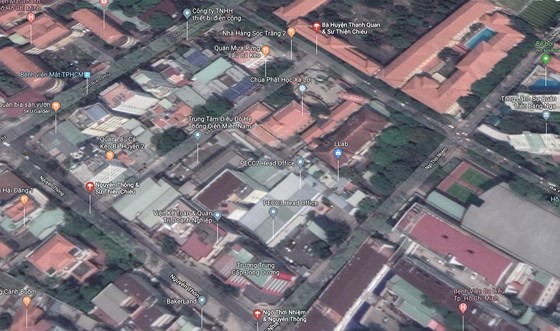
HCM City has adjusted the permitted
height of new buildings in an area in District 3. — Source Google Maps
The People’s Committee of HCM City has approved an
adjusted construction plan for the ZV-9 area bordered by Ngô Thời Nhiệm,
Nguyễn Thông, Sư Thiện Chiếu and Bà Huyện Thanh Quan streets.
The ZV-9 area is part of the “930ha Area” project
located in downtown HCM City.
Under the new adjustment, buildings on land covering
1,917sq.m located at 32 Ngô Thời Nhiệm Street in District 3 will be permitted
to have a maximum height of 32 metres, an increase of 12 metres over the
previous figure.
In addition, other construction works in the ZV-9 area
will be under the planning project for the “930ha Area”.
The city’s People’s Committee has directed the
Department of Planning and Architecture to work with the People’s Committee
of District 3 to add the adjustment plan to the “930ha Area” planning project.
The city’s People’s Committee has also asked related
units to closely monitor and manage the project during the implementation
process.
The District 3’s People’s Committee is expected to
publicise the new adjustments within 30 days.
Employees could work more overtime
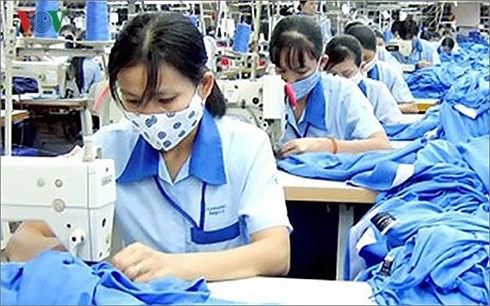
Employees may be able to work more
overtime under a proposed change to the law. — Photo vov.vn
Employees could work up to 400 hours of overtime per
year compared to the current 200 hours under the revised Labour Code which
will be submitted to the National Assembly next year.
The current limit of 200 hours is lower than both
Thailand and Singapore, and had led to complaints from businesses.
According to Mai Đức Thiện, deputy director of the
Legal Department under the Minsitry of Labour, Invalids and Social Affairs,
for years businesses had been asking the Government and National Assembly to
increase overtime working hours.
Under the revised law, overtime work must be agreed
between employees and employers but it would not exceed four hours per day or
400 hours a year, Thiện told online newspaper vov.vn.
Hanoi steps up inspections at
private drugstores

Hà Nội has stepped up
inspections of drugstores, and will name and shame those that do not meet
Government standards.— Illustration Photo
Health inspectors in Hà Nội have suspended operations at ten clinics and private drugstores since April. Inspection teams have examined a total 58 clinics and private drugstores over the last four months. The main violations found involved inadequate infrastructure, licensing, space and the sale of food supplements without food-safety licenses. According to the city’s Health Department, there are 35 hospitals, 165 general clinics, 668 traditional medicine clinics and 2,658 specialised clinics and medical service centres in the capital. The city is also home to 6,861 drugstores and drug companies, but many do not meet Government standards. In order to effectively manage the operation of private clinics and drugstores, the city’s Health Department in co-ordination with relevant agencies will step up inspections and strictly punish any violators, while making those cases public in the media.
Universities should enjoy more
autonomy
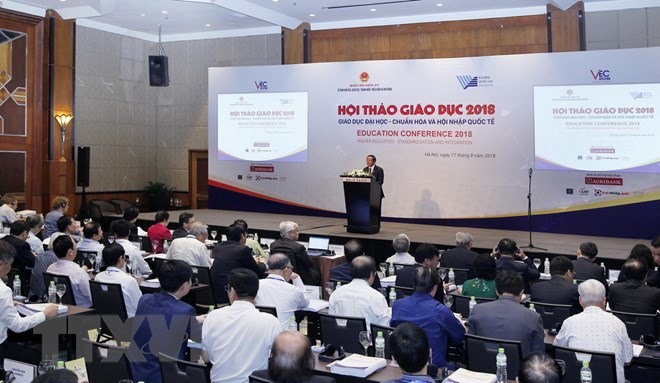
Universities need to foster
innovation and take advantage of their autonomy to benefit the country and
society, said Deputy National Assembly Chairman Đỗ Bá Tỵ.
Universities need to foster innovation and take
advantage of their autonomy to benefit the country and society, said Deputy
National Assembly Chairman Đỗ Bá Tỵ.
Tỵ made the statement yesterday at a conference themed
“Higher Education – Standardisation and Integration” which attracted the
participation of some 200 experts and educators.
On the occasion, he emphasied education and training as
the country’s top priority. He also stressed the importance of higher
education and improving the quality of labour productivity in the context of
globalisation and integration.
Universities needed to be independent and responsible
for developing training strategies to satisfy labour market demands, while
making breakthroughs and building their reputations, he said.
According to Senior Economist Dilip Parajuli from the
World Bank, Việt Nam ranked 84th out 137 countries and territories for its
higher education system, with only Hà Nội National University and HCM City
University being featured in the list of the top 1,000 universities worldwide
and five institutions named in the top 400 Asian universities.
Parajuli said that Government policies limited
universities from unleashing their full potential, so the Government should
loosen its management over financial and administrative issues and create
more room for them to self-develop.
The Government should only play the role of an orientor
and let universities make decisions on their own, he said.
He added that universities would be responsible to
their students and to the Government, and they should ask for more autonomy
to improve quality and rankings for themselves and Việt Nam’s education in
general.
As public investment for higher education in Việt Nam
remains low, Parajuli recommended the Government to increase funding for key
universities, especially the two national ones. Shared financial plans,
student credit for example, should be developed to create more educational
opportunities for all.
Academic freedom and internationalisation were
essential to improving the autonomy of domestic universities, experts suggested.
Regarding the emerging trend of globalisation in
education, the most significant changes include international student
mobility, international expansion in the form of branch campuses, the rising
number of international lecturers at domestic universities and international
research collaborations.
Việt Nam, however, has showed little engagement in
these changes which has put the country behind.
According to a report by the Ministry of Finance (MoF),
most public universities in Việt Nam depend on the State budget and tuition
fees. Their income from services, research and technology transfers remains
low.
The MoF said the Ministry of Training and Education
should collaborate with universities to offer suitable tuition fee ranges,
ensuring benefits for both universities and students. Students should also
receive more financial support under the form of credits, scholarships or
assistance.
The MoF also asked public and private universities to
build and implement their financial plans, proactively seek revenue and
control their spending, instead of waiting for funding from the State.
JICA implements sustainable
development projects in Quảng Nam

Cơ Tu ethnic minority people perform
traditional dancing in Hội An in the central province of Quảng Nam. Photo
courtesy of JICA
The Japan International Cooperation Agency (JICA) has
successfully implemented a number of sustainable development projects,
particularly in environment and tourism, in Hội An in the central province of
Quảng Nam, JICA announced yesterday on the occasion of Japanese Days in the
province, which is taking place from August 16-19.
Konaka Tetsuo, chief representative of JICA in Việt
Nam, said in recent years JICA had worked with the province to develop
small-scale projects implemented by Japanese NGOs, local governments and
universities.
These included the Water Environment Improvement
project for the Japanese Bridge area in Hội An, a popular tourism mecca. The
project improved the sewerage system through the rehabilitation of the bridge
canal and built a wastewater treatment plant with capacity of 2,000 cubic
metres per day.
The canal has been rehabilitated, and the plant is
expected to be completed by November.
Other projects are under the JICA Partnership Programme
which JICA financially supports. Japanese non-governmental organisations,
local governments or universities offer technical or training support.
The aim of such projects is to encourage the
participation of Japanese citizens in international cooperation using
Official Development Assistance (ODA) and transferring their knowledge,
technology and experience.
For example, the Naha Model Waste Reduction Programme in
Hội An, implemented by the NGO Okinawa Citizens Recycling Movement (OCRM) and
Naha City (Okinawa Prefecture, Japan) in all 13 communes in Hội An, used the
experience of the City of Environmental Symbiosis model of Naha City.
In addition, the long-term project Support for Rural
Potential Development for the Cơ Tu ethnic minority community in Nam Giang
District was initiated by the Foundation for International Development/Relief
(FIDR).
Implemented in 2016 and to be completed in 2020, the
community-based tourism project helps to develop the local economy and
preserves the cultural values of the Cơ Tu, including weaving, dancing and
traditional dishes.
Community-based tourism development can maximise the
potential and strength of indigenous culture, history and local life, and
contribute to the improvement of incomes and people’s livelihoods, according
to JICA.
It also offers opportunities for locals to understand
the traditional values of the local community where they live, which can be
transmitted to visitors.
Another community-based tourism project, Expanding and
Developing Traditional Handicrafts, is being implemented by Minamiboso in
Chiba Prefecture (Japan).
The project helps develop handicraft products by
supporting the design and renovation of shops offering artisans’ products,
and offers workshops to artisans on making goods that meet the needs of
consumers and tourists.
Showa Women’s University in Japan operates a project on
livelihood diversification through heritage tourism in remote or rural agri-fishery
villages.
In addition, JICA has also dispatched Japanese
volunteers for a two-year term to share experiences and support people at the
grassroots level.
Currently, two volunteers are working at the Hội An
Cultural Heritage Conservation Centre, under the People’s Committee of Hội An
City.
So far, 18 Japanese volunteers have been sent to work
in Quảng Nam, mainly in the fields of architecture, environmental education
and preservation of cultural heritage.
Yesterday, more than 150 business leaders from Japan
met in Hội An as part of the activities to commemorate the 45th anniversary
of the establishment of diplomatic relations between Việt Nam and
Japan.
Of more than 20 countries and territories investing in
the province, Japan is the third largest investor with 20 projects, with
total registered capital of more than US$115 million, of which 18 projects
are in operation and two are under construction.
Residents evacuated after landslides
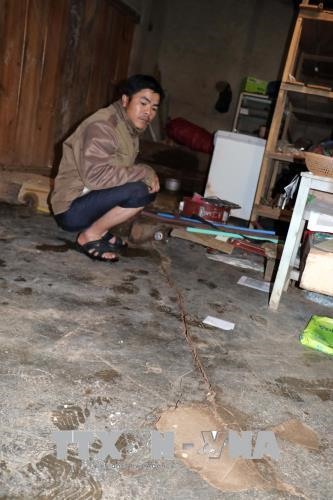
Tạ Hữu Bình, a resident of Tumơrông
Village, examines a large crack in his house. — Photo baotintuc.vn
More than 100 households in Tu Thó Village in the
Central Highlands (Tây Nguyên) Province of Kon Tum were evacuated from areas
at risk of land erosion, reported online newspaper baotintuc.vn.
The evacuation was expected to be completed today.
So far, the district has evacuated 71 households from
two villages of Tu Thó and Tumơrông to safer areas.
Prolonged heavy rains have already caused landslides in
the two villages.
A crack appeared on a hill behind Tu Thó Village,
causing a mudslide which destroyed six homes.
“More cracks have started to appear which has caused
residents to worry,” said Trần Công Hồng, vice chairman of Tê Xăng Commune.
“The local government has evacuated 43 households from
dangerous areas. But the cracks have become bigger, so we plan to move the
whole village,” he said.
In Tumơrông Village, on Wednesday and Thursday, cracks
appeared around the village and a landslide destroyed three houses. With the
support of the local government, the villagers moved to safety.
Lâm Trường Sơn, party secretary of Tumơrông Commune,
said the crack was 1km long, causing damage to people’s houses and communal
offices.
Although residents were moved, the new locations were
still not safe due to continuing erosion, said Sơn.
According to the local government, it was difficult to
find stable resettlement for the evacuated residents.
Locals enjoy puppet plays in the
heart of HCM City

The first Việt Nam Puppetry Festival
is held on HCM City’s Nguyễn Huệ Pedestrian Street from August 16-18.
Thousands of locals on August 16 attended the first
Việt Nam Puppetry Festival on HCM City’s Nguyễn Huệ Pedestrian Street, which
closes on August 18.
The event, themed Giấc mơ xanh (Blue Dream), aims to
bring puppetry art closer to the public, organisers said.
Different types of puppetry were performed on six
different stages, including, water, shadow and hand puppets, among others.
“I’ve only heard of puppet plays, and had never seen
them in real life. I’m glad I brought my daughter here so that she can enjoy
the show with me,” Thảo My, 27, told Việt Nam News.
“My daughter especially enjoyed the shadow puppetry!”
she said.
Hoàng Hải, a friend of My, said: “Though this event
appears to target a younger audience, I feel like adults would benefit from
it too since not many people know about puppetry.”
Many people on the street agreed that puppetry is
rarely emphasised by the media as a significant form of art.
“Having the opportunity to see puppetry in real life,
though on a small scale, got me thinking about what a pity it would be if we
were to lose this beautiful form of art,” Hải said.
“It requires so much effort to produce a single play!
From the shadow puppet play I saw, I learned that artists not only have to
handle the puppet but voicing of their character,” My said, adding that each
character needs a different tone.
Hồn quê (Hometown Spirit) was one of the most important
plays of the festival. It was performed via water puppetry and created by
People’s Artist Vương Duy Biên.
This play combined the art of arranging subjects and
water puppetry, and emphasised the value of hometowns, organisers said.
In addition to locals, the Việt Nam Puppetry Festival
attracted many international tourists.
Tim, 45, from the US, said that though he did not
understand most of the play’s story plot, he was excited to film everything
that he saw.
“This speaks Asian to me! I can’t wait to show this
inspiring footage to my fellows back home,” he said.
Some people said the three-day event was relatively
short, and that similar events should be held in the future.
“Every play tells a beautiful moral and story that we
can benefit from. I understand that puppetry is not for everyone but at least
the young generation should be reminded that it exists,” Đại Nghĩa, 58, said.
VNN
|
Thứ Hai, 20 tháng 8, 2018
Đăng ký:
Đăng Nhận xét (Atom)
Không có nhận xét nào:
Đăng nhận xét